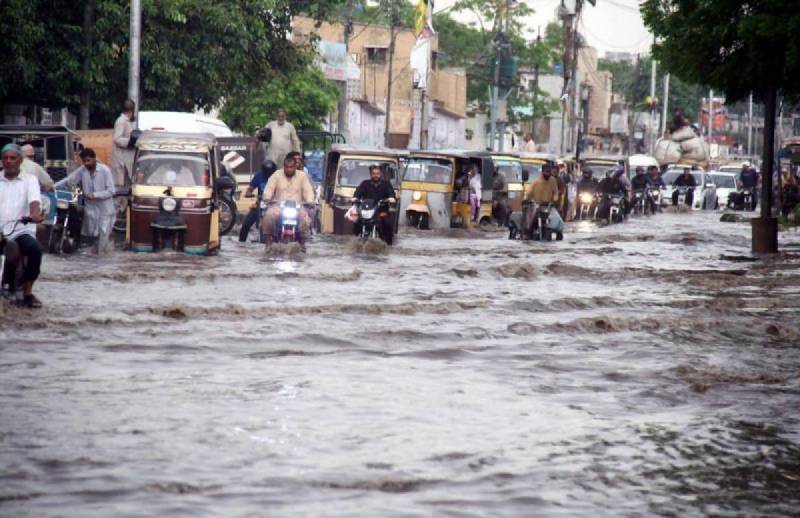ISLAMABAD – Parts of Pakistan are on edge amid peak of Monsoon rains. Punjab, KP, and Balochistan are facing massive torrential rains and flood Risk.
In recent alert, National Emergencies Operation Center NDMA issued series of impact-based weather alerts highlighting potential flood and flash flood risks in several regions of Pakistan. Alerts have been issued in anticipation of widespread to heavy rainfall across the country, expected till July 17.
In Punjab, widespread rainfall is expected across districts including Jhelum, Chakwal, Talagang, Mandi Bahauddin, Sargodha, Hafizabad, Gujranwala, Gujrat, Sialkot, Faisalabad, Lahore, Narowal, and surrounding areas.
Moderate to heavy rainfall is forecast for southern districts of DG Khan, Rajanpur, and Rahim Yar Khan. This weather activity may result in medium to high flows in torrents of DG Khan and Rajanpur, while nullahs originating from the Pir Panjal range in northeastern Punjab may experience a significant rise in water levels.
For KP, moderate to heavy rainfall is likely between July 12 to 17 in areas including Dir, Swat, Besham, Abbottabad, Mansehra, Haripur, Karak, Kohat, Kohistan, Nowshera, Peshawar, Mardan, Malakand, Charsadda, Bannu, Buner, Swabi, and Waziristan.
This may lead to increased flows in the Kabul River and its tributaries, including Swat, Panjkora, and Kalpani nullahs. River Swat and Panjkora, along with their associated streams, may swell due to rainfall in their catchments. River Kabul at Nowshera is expected to reach low flood levels.
In Balochistan, an active weather system is likely to trigger isolated rains and thunderstorms from July 13 to 17 in Ziarat, Quetta, Mastung, Kalat, Surab, Zhob, Barkhan, Musakhel, Loralai, Awaran, Khuzdar, Dera Bugti, and surrounding areas. There is a possibility of flash flooding in local streams and nullahs, particularly in the torrents originating from the Kirthar Range.
NDMA, and other government institutions are advised to ensure the readiness of emergency teams, availability of machinery, and clearance of drainage systems. Tourists should avoid high-altitude areas, while residents in vulnerable zones must secure valuables, vehicles, and livestock, and keep essential supplies ready for 3–5 days.














